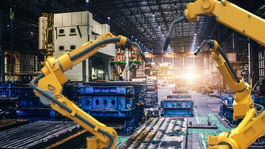In today's rapidly advancing technological landscape, one area that has witnessed remarkable growth and innovation is the field of artificial intelligence (AI). Within AI, computer vision is a groundbreaking discipline that aims to replicate human vision and perception using algorithms and computational models. This article will explore the intricacies of AI computer vision, its applications across various industries, and the cutting-edge techniques driving its success.
Understanding AI Computer Vision:
AI computer vision is an interdisciplinary field that combines computer science, mathematics, and machine learning to develop systems that can interpret, analyze, and understand visual data. These systems are designed to mimic human visual perception and comprehend images and videos in ways that surpass traditional methods.
Key Concepts and Techniques
Image Classification:
Image classification is a fundamental aspect of AI computer vision, wherein an algorithm learns to categorize images into different predefined classes. Convolutional Neural Networks (CNNs) are commonly employed for this task, as they excel at recognizing patterns and extracting relevant features from images.
Object Detection:
Object detection involves localizing and identifying multiple objects within an image or video. Popular algorithms like the Region-based Convolutional Neural Network (R-CNN) and the You Only Look Once (YOLO) framework have advanced object detection capabilities. The latest Gigantor product, GigaMACS™ Unlimited, is a synthetic scaler enabling unlimited object detection even when thousands of objects are in a single frame, like a stadium full of people. Gigantor's Unlimited technology also makes applications like autonomous vehicles and surveillance systems safer, more accurate, and dependable with real-time results.
Semantic Segmentation:
Semantic segmentation focuses on segmenting an image into different regions and assigning meaningful labels to each segment. Deep learning models like Fully Convolutional Networks (FCNs) have revolutionized semantic segmentation, enabling precise understanding of visual scenes for medical imaging and autonomous robotics applications.
Instance Segmentation:
Instance segmentation takes semantic segmentation a step further by identifying different regions and differentiating individual instances of the same object class. State-of-the-art approaches like Mask R-CNN have been instrumental in object counting, precise localization, and augmented reality tasks.
Generative Adversarial Networks (GANs):
GANs have revolutionized computer vision by introducing the concept of generative modeling. These networks consist of a generator and a discriminator that compete against each other, resulting in realistic synthetic image generation, image-to-image translation, and style transfer.
Applications of AI Computer Vision:
 Healthcare:
Healthcare:
AI computer vision has made significant strides in healthcare, aiding in early disease detection, radiology interpretation, surgical assistance, and drug discovery. It enables automated analysis of medical images, making diagnosis faster and more accurate.
 Autonomous Vehicles:
Autonomous Vehicles:
Self-driving cars heavily rely on AI computer vision to interpret their surroundings, detect objects, and make real-time decisions. Computer vision algorithms enable the identification of traffic signs, pedestrians, and other vehicles, ensuring safe navigation.
 Retail and E-commerce:
Retail and E-commerce:
In retail, computer vision enables visual search, allowing customers to find products similar to a desired image. It also facilitates inventory management, shelf monitoring, and facial recognition for personalized shopping experiences.
Security and Surveillance: 
AI computer vision enhances security systems by providing real-time video analytics, facial recognition, and anomaly detection. These capabilities enable efficient monitoring of public spaces, identifying suspicious activities, and preventing potential threats.
 Manufacturing and Quality Control:
Manufacturing and Quality Control:
Computer vision is crucial in manufacturing industries, ensuring product quality and minimizing defects. It enables automated inspection, defect detection, and precise measurement, improving efficiency and reducing costs.
Conclusion:
AI computer vision has emerged as a groundbreaking field, revolutionizing various industries with its ability to interpret and understand visual data. Through image classification, object detection, semantic segmentation, and other advanced techniques, computer vision algorithms enable powerful applications in healthcare, autonomous vehicles, retail, security, and manufacturing. AI computer vision is poised to reshape our world as technology evolves, unlocking new possibilities and enhancing human experiences in unimaginable ways.